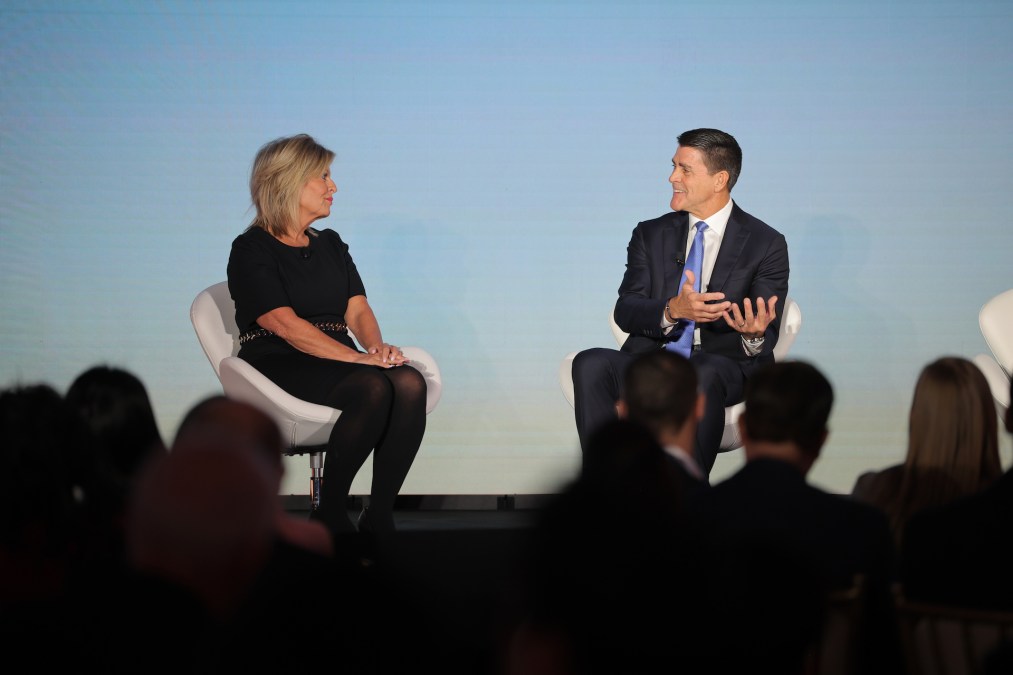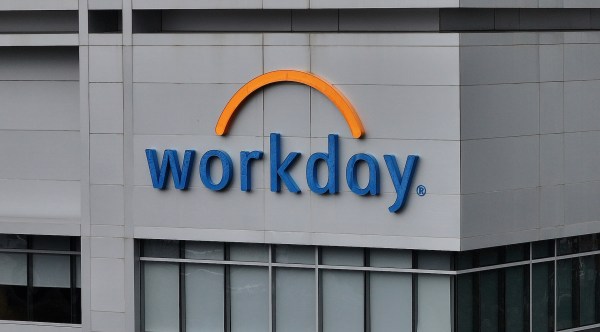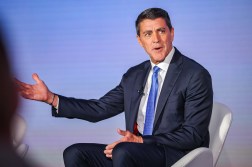Workday eyes federal expansion amid an administration that wants ‘to do things differently’

It takes the federal government an average of 101 days to hire someone for a job. Accounting for the initial application process for a federal role on USAJobs.gov, that timeline often stretches well beyond six months.
Workday — the California-based HR and financial services software company that claims to host one in every three job applications in the U.S. — believes that timeline is unacceptable and that, after two decades in business, it has the bona fides to reduce it by bringing a more modern workforce management ecosystem to the federal government.
The company has started making targeted headway in its government work in recent years, with notable contracts with the Department of Energy, Defense Intelligence Agency and others at the state and local levels. And now, with the Trump administration placing top value on driving efficiency and slashing bureaucracy — and artificial intelligence becoming an operational reality at the federal level — Workday sees an opportunity to ride that momentum and drive widespread transformation across the government’s workforce management functions, CEO Carl Eschenbach told FedScoop.
“It’s a massive business opportunity for Workday to drive efficiency and effectiveness across the federal government. Because while there’s a tremendous amount of money spent each year in the federal government on technology and infrastructure, the systems, quite frankly, are still antiquated. They’re still on premise. They haven’t moved to a modern architecture like a cloud-based solution that Workday has now for 20 years. And therefore that inefficiency is costing more money than people would probably want,” Eschenbach said in an interview.
Agencies are spending huge portions of their IT budgets to support and maintain those legacy HR systems, Eschenbach said, without the features they desire to support skills-based planning and hiring efforts and without leveraging machine learning and AI to make actionable decisions on their workforce data.
“Technology is super powerful. But technology only enables change — it doesn’t drive change. People drive change. And right now, I think we have a unique opportunity — and I could be completely wrong, and I’m OK admitting that — to leverage the people transformation side and the willingness to do something different and break down barriers,” he said in reference to the Trump administration’s early agenda to “do things in a different way, have reforms and change policies, and move quickly to do something.”
Joined by Lynn Martin, chief growth officer for government at Workday, Eschenbach spoke with FedScoop on Thursday ahead of his company’s Federal Forum. The two, later in the day, would share many of the same thoughts on stage during a discussion about the opportunity to reimagine the federal workforce in an era guided largely by the commoditization of AI and the current administration’s rethinking of the shape, size and mission of the government.
“I think everyone in that room today needs to think about: How do I take advantage of this time, in this moment where we can leverage the administration’s willingness to drive costs out, create a new employee experience and, oh, by the way, do it with speed and a sense of urgency that doesn’t happen too often in the government. So how do we all capture that opportunity right now?” Eschenbach said of the Workday forum.
Martin — who knows the business of federal technology as well as anyone after spending her career with some of the government’s top tech partners like HP, VMware and Google, among others — said it’s one thing to introduce a modern technology on a small scale to an agency. But transformation at scale, driving change, “that’s the hard part.”
But Workday has proven experience working at such a scale, Martin pointed out, including with Fortune 500 companies like Walmart, which boasts a workforce of 2.1 million.
In total, Workday has more than 70 million users, according to Eschenbach, who said the enterprise platform supports the processing of more than 1 million applications every day — and more than 1 trillion transactions each year.
It’s that scale — and the data generated by it — that creates an advantage for Workday in the age of AI, the CEO explained.
“All of that data, the richness of the data, the context of the data, gives us a truly unfair advantage when it comes to thinking about the world right now of AI,” he said. “Our data is pristine. Every customer is on the same code base. We know the context of every interaction on our infrastructure. No one else has that. So our output and the power of our AI back to our customers is extremely differentiated from everyone else out there.”
Patrick Blair, the company’s chief revenue officer, pointed to AI and other digital features native to a platform like Workday as a must-have if the government wants to attract young talent that knows nothing else, particularly during that first experience applying for a job.
“The federal government understands that they want to get people that want to serve. But then those people that want to serve have to have an easy entry point. So that’s from the recruiting process, the hiring process, the onboarding process, you know, all of that has to be smooth,” Blair said.
All too often, Blair said, he hears the opposite from agencies that are “very frustrated by their ability to react to applicants” because it can take “six, eight weeks before they can get back to someone that even applied.”
The experience could be especially frustrating for Gen Z Americans entering the workforce, who’ve grown up with smart devices integral to their daily lives. “It doesn’t take that long for anything in their entire life,” Blair said, so they move on and agencies “miss out.”
Eschenbach said it all ties together, from the applicant and employee experience gained by using a more modern platform to the manager’s ability to make improved decisions about their workforce.
“You start to capture all of the skills of your employees. And then when you have a new job requisition you want to post, or you have a new project you have to fund, our system in leveraging AI starts to look at all the skills you have across your employee population, and then starts to say, ‘Why don’t you take these five employees and apply them over here?’” he said.
Such enhanced intelligence also benefits recruiting and reskilling, he added.
Ultimately, Eschenbach said his company is ready to invest the technology and expertise to match the need of the moment in Washington.
“We will bring the technology. We can do all of this, but the reform has to happen through policy change in people,” he said. “So we’re bringing ideas, we’re bringing thoughts, we’re bringing suggestions, we’re bringing our knowledge of how to do that, and obviously we have the technology platform, and that’s been the long pole in the tent.”
And that “massive investment,” he said, comes amid “the perfect inflection point when the government’s saying we’ve got to do things differently.”
“There is a desire to drive transformation. There’s a desire to do things faster, and I think we should all take advantage of this opportunity to transform our antiquated infrastructure going forward. That’s the excitement we see.”






